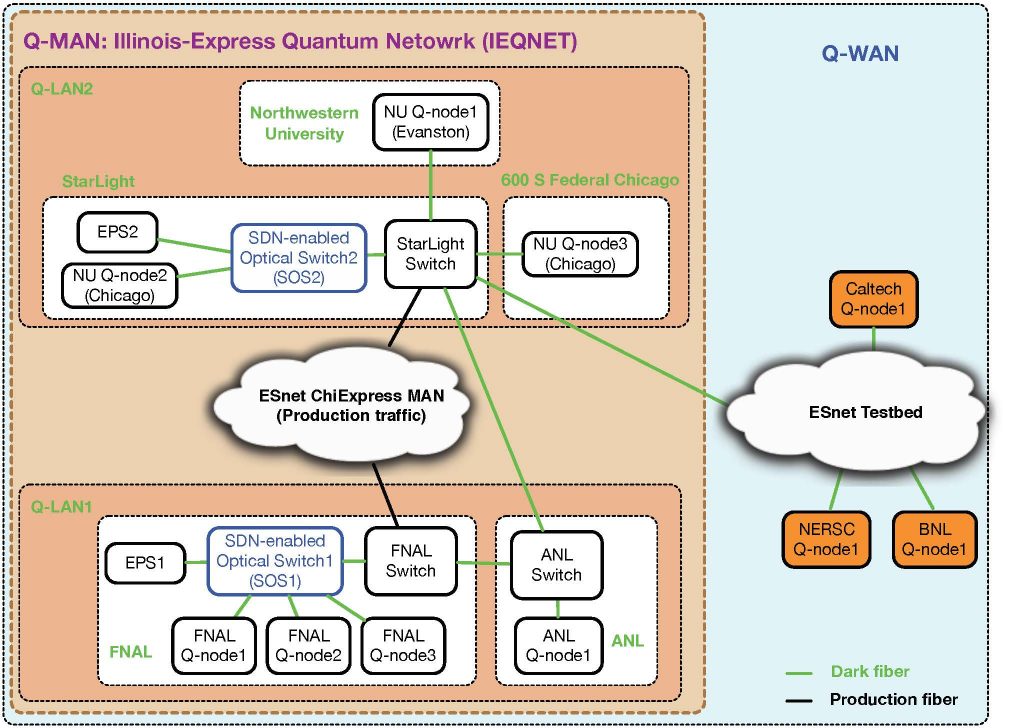IEQNET, as illustrated below, is designed to comprise multiple sites that are geographically dispersed in Chicago metropolitan area. These sites include Northwestern University, StarLight, a data center at 600 S Federal Chicago, FNAL, and ANL. Each site has one or multiple quantum nodes (i.e., Q-nodes), which are able to generate and measure quantum signals. Q-nodes are connected to SDN-enabled optical switches through optical fibers. (Note: SDN refers to Software-Defined Networking technology) The optical switches are further connected among one another to form a meshed all-optical network. IEQNET contains two logically independent quantum LANs, Q-LAN1 and Q-LAN2. The Q-LANs are connected by dedicated communication channels established in ESnet ChiExpress MAN or additional dark fibers between FNAL and StarLight.
- Q-LAN1
(based on existing FQNET)
- EPS1, an entangled photon source that is able to generate entangled photon pairs at multiple wavelengths.
- SOS1, a SDN-enabled optical switch that supports any-to-any dynamic wavelength switching capabilities.
- Q-nodes: FNAL Q-node1, FNAL Q-node2, and ANL Q-node1.
- Q-LAN2
- EPS2, an entangled photon source that is able to generate entangled photon pairs at multiple wavelengths.
- SOS2, a SDN-enabled optical switch that supports any-to-any dynamic wavelength switching capabilities.
- Q-nodes: NU Q-node1, NU Q-node2, and NU Q-node1.
Entangled photon sources are critical resources in IEQNET. Note that entanglement can in principle ultimately be used for teleporting any quantum state, and thus serves as a general resource in quantum networks. EPS1 and EPS2 can provide backup for each other. SOS1 and SOS2 are also simultaneously serving as backup for each other.
It is envisioned that IEQNET can be extended in the future to interconnect with external quantum networks to build up the quantum Internet.
Illinois Express Quantum Network (IEQNET) Topology
OSTI.GOV Technical Report: Illinois-Express Quantum Networks (IEQNET) https://doi.org/10.2172/1616300

